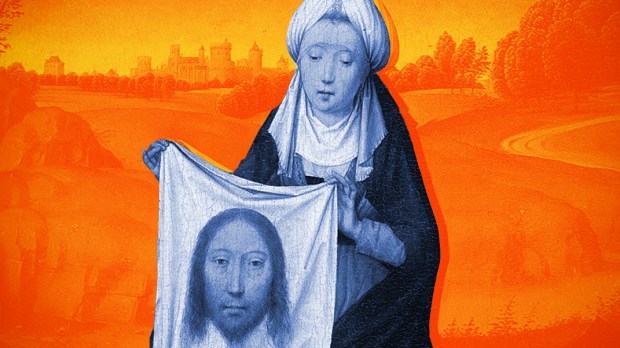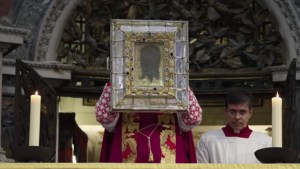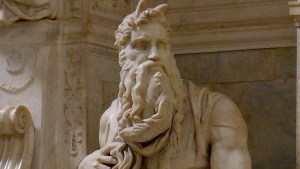According to tradition, Veronica was a woman (apparently from Jerusalem) who, seeing Jesus carrying the cross through the Via Dolorosa, was moved with compassion and handed him her veil so that he could wipe the blood and sweat from his forehead. When Jesus returned the veil, the image of his face was miraculously imprinted on it. The relic became then widely known as the “Veil of Veronica,” in what seems to be a kind of pun. The sources from which the story is drawn are all in Greek (the name being Berenikē or Beronike, meaning “she who brings victory”), the Latinized Veronica allegedly translates “the true image,” the vero icono of Christ. Ironically enough, several existing images claim to be the original, true relic.
The problem is that the name Veronica (or the original Greek Beronike) is nowhere to be found in the Bible.The same goes for her veil. All of the sources for her story come from extra-biblical Christian tradition, which has commonly assigned this name to the unnamed woman who hemorrhaged blood for 12 years until she touched the edge of Christ’s garment and was miraculously healed. The passage is found in the three synoptic Gospels (Cf. Mark 5:25–34; Matthew 9:20–22; and Luke 8:43–48). While the legend of Veronica’s veil is not based on Scripture, the story of a passerby offering kindness to Jesus on his way to Calvary may well be based in some fact, passed on through oral tradition, collected in the apocryphal Gospel of Nicodemus, mentioned in the famous Historia Ecclesiastica (written somewhere between the years 312 and 324 by Eusebius of Caesarea) and then developed throughout the centuries in other apocryphal texts.
Following the synoptic Gospels, Eusebius tells us that, at Caesarea Philippi, there lived the woman whom Christ healed of a hemorrhage. The apocryphal Acts of Pilate (dated from the 4th or 5th century) identify this woman with the name Veronica. Later tradition (elaborated in the 11th century, according to most historians) claimed Jesus gave the healed woman featured in the gospels a miraculous cloth, which she used to heal emperor Tiberius. This cloth was then understood as being the actual Veil. Some other traditions claim she was married to Zacchaeus, the tax collector featured in the gospel of Luke (Cf. Lk 19:1–10). Finally, the linking of this cloth with that of the Passion occurs relatively late, around the year 1380, in the popular Meditations on the life of Christ. Before that, the cloth had not been related to it in any way whatsoever.
Not surprisingly, Veronica is the patron saint of photographers and laundry workers.



